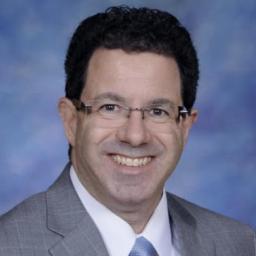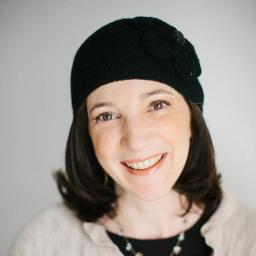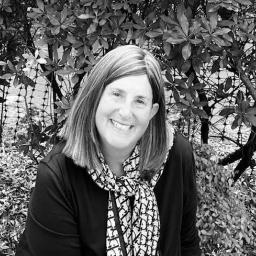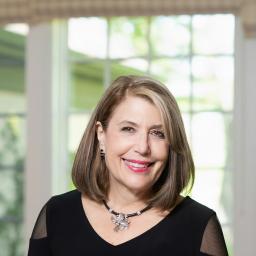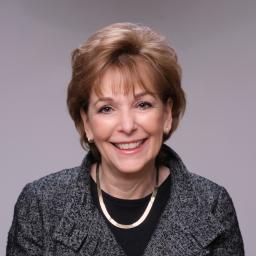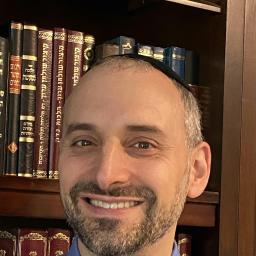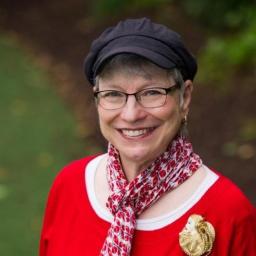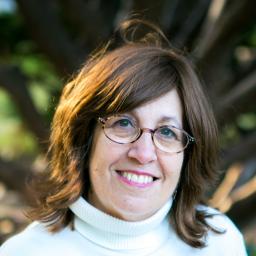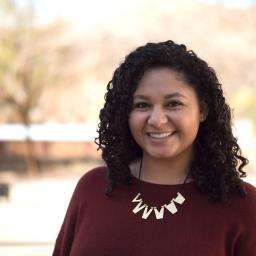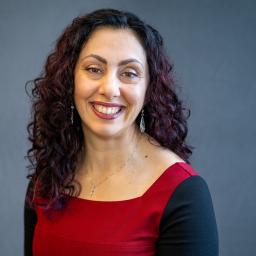Debra Shaffer Seeman, Prizmah's Network Weaver, sat down with Ann Baidack Pava and Jeremy Pava to discuss their philosophy, their personal backgrounds, and their vision for the field and community.
Debra:
What has motivated you to support programs designed to help women in Jewish day school and yeshiva leadership, such as Prizmah's Orthodox Women in Leadership portfolio?
Ann:
We have been supporters of Prizmah since its founding, because the work Prizmah does is essential for everyone in the Jewish community, for men, women, boys and girls. We believe that the entire community is stronger when all members can participate more fully.
Jeremy:
In leveling the playing field by helping women gain the skills and knowledge they need in order to assume leadership opportunities in the Orthodox Jewish community, we hope that women’s talents can be utilized by more of the Orthodox community. I believe that if we’re not utilizing all of our talent, we’re handicapping ourselves; we’re playing with one arm behind our back. We want to release the potential, energy, power and creativity of 100% of our community.
We know that one size doesn’t fit all, and what works for one part of the Jewish community may not work for other parts of the community. Therefore, we invest our philanthropy across the religious spectrum and are not trying to impose change on anyone. Ann and I see ourselves as philanthropists who are here to support our community in taking the next step, when they are ready for that step.
Debra:
Where does your dream to support women in Orthodoxy come from?
Ann:
When I graduated from college, my sisters made me a T-shirt that said, “Save the female whales in Ethiopia,” a nod to my passion for working on behalf of those who deserved to be supported. I was a feminist through and through, though less familiar with the Orthodox community. There was a moment for me which embodies the story behind the story.
We have three grown children, two sons and a daughter. I watch my sons who, to this day, love shul, davening and leyning. They still share their pride and a little bit of competition about who “does more in shul,” with all of us. Our sons learned this from being raised in a community that created spaces for them to shine in these ways.
However, our daughter Devorah as a child didn’t love sitting behind the mechitzah with me, since there was nothing for her to do. She was hurt by multiple experiences of being and feeling left out. I wanted her to feel the same love of Judaism as her brothers.
There was a particular moment when she was excluded from receiving a tikkun that all the boys received, when I decided that I wanted to make a change. I understood at that moment that she needed to see other girls and women who were Torah scholars. Seeing my daughter being left out made me realize how important it was that there were strong smart role models for women in the Orthodox community.
Fast forward a number of years and we can point to the moment when our daughter began to feel connected. It happened when she was in high school. Devorah had a Gemara teacher, a woman named Elana Weinberg, who had studied at Yeshiva University’s Graduate Program in Advanced Talmud Studies (GPATS). The girls absolutely loved her even though, or perhaps because, she was known as the hardest teacher in the school. We saw what a difference it made that the girls had a female Talmud teacher who was really smart and held her students accountable.
Seeing how my own child flourished when she had a female role model helped me solidify my resolve to support Jewish women in leadership.
Jeremy:
Thanks to my parents, growing up I experienced firsthand the power of a warm, loving, halakhic lifestyle to give meaning and purpose to life - to create strong family and community bonds, to lead a life filled with concern and care for others through chesed and tzedakah, and to live a life of love and connection with Hashem. To me, it seems like common sense that if women are not being given the same opportunities for engagement and connection as men, and if I value and love my community, I have to do whatever I can to correct these inequities so that my community will be strengthened, and more lives can be spiritually enhanced.
As important as it is for the girls to have female role models, it’s just as important for the boys to experience women as leaders in our community. Within the fabric of the Orthodox community, there’s an implicit grounding that it’s better to be a man. All of our rabbis and talmidei chachamim are men. Through the stories we tell and the texts that we study, we have been signaling to our community that men are destined to be leaders and women are intended to be followers.
When we put women in leadership roles, we are teaching that women have as much to contribute, are as smart, dedicated and devoted, and can provide similar spiritual enrichment to their male counterparts. It’s crucially important to change a mindset that might be implicit in our tradition. And that is true for both our boys and our girls.
Debra:
Ann, you’ve been invested in leadership development and women’s philanthropy for decades. Tell us about a choice that you made which was a catalyst in impacting the way that other women lead.
Ann:
I was the founding chair of the board of Hebrew High School of New England, now the New England Jewish Academy. When we started that school 26 years ago, I was pregnant with our daughter, and there was no Jewish high school in the region. Rather than sending our own kids away for high school, as was standard in our community, we wanted our children to attend a local regional Jewish high school. So I was invested in the creation of a Jewish high school in our area. I coordinated the effort in which New Haven, Springfield, and Hartford all came together to get the school off the ground. This included hundreds of hours of work, traveling to each community, meeting with families, rabbis, funders and local Jewish organizations. It was a huge full-time volunteer position, and the endeavor was incredibly successful.
The time came when we were ready to hire a head of school, start a board, and become a 501(c)3. After all the successes that we had accumulated under my coordination, when it was time to decide upon the board’s presidency, I assumed that everyone would turn and ask me to fill the role. That was not at all what happened, however. In our meeting to discuss the school’s board of directors, community leaders in the room offered the role to two men, one after the other, who each had full-time work and politely declined.
Not understanding what was getting in the way, I raised my hand and offered to fill the role. This was met by total silence. After the passage of some awkward time, one person quietly and reluctantly said, “Okay Ann, you can be the chair of the board.” I didn’t understand what was going on. I knew that these people loved and appreciated me. I knew that I had just successfully laid all of the groundwork for our school. What could possibly be getting in the way of them enthusiastically and wholeheartedly inviting me to assume the mantle of leadership?
What I learned the next day was that women in our community weren’t supposed to serve as board chairs. They were allowed to do all of the work, but community members assumed that giving the title to a woman was unacceptable. After significant resistance from a local rabbinic authority, who later moved out of the community, I experienced a truly pivotal moment in my life and the life of our community. I moved forward as the chair of the board, the first woman to ever hold that position in our Orthodox community.
Debra:
Where do you see signs of change or progress in women's leadership today?
Ann:
In the 26 years we’ve been involved in this work, we’ve come so far. We’re ordaining Orthodox women through Maharat, training Orthodox women through Ohr Torah Stone. We’ve got yo’etzot halakhah filling so many roles that some would even consider them “commonplace,” and GPATS, a two-year master’s program in advanced Talmud at YU, is teaching women Talmud in ways that were unheard of a few decades ago.
Jeremy:
In addition, the physical design of the Orthodox shul has changed. We now have models for a women’s section in the synagogue as something other than the “penalty box,” with equal access from both sides of the mechitzah. Megillah readings and women’s tefillah groups that used to be controversial are much more accepted today.
Ann:
And the JOFA Devorah Scholars Program, which we are proud to fund, provides funding for Orthodox synagogues in North America to hire their first Orthodox woman in a spiritual leadership role. There’s tremendous progress. We feel very hopeful about the direction that women’s leadership is heading, especially in the realm of Jewish day schools.
Debra:
Given your investment, what do you hope to be true for women in Jewish day school and yeshiva leadership that is not yet true today?
Ann:
We hope that more women are able to take on senior leadership positions in Orthodox Jewish day schools. We believe very deeply that, at this moment in history, women are more likely to rise to the senior-most leadership positions in schools than anywhere else in the Orthodox community.
Outside of Jewish day schools, we are not seeing women as the number one leaders in our Orthodox organizations, and the community is grappling with that perceived ceiling. Knowing that approximately 15% of Prizmah’s Orthodox schools are headed by women tells us that there is precedent upon which we can build. Seeing that 39 women were accepted into Prizmah’s Rising Leaders program is a fact on the ground.
Jeremy:
We see our role as being here to give this process a boost, in order to help overcome the obstacles. We are hoping to accelerate the process in this way.
We are also trying to build the pipeline of Orthodox women leaders by supporting multiple educational institutions so that more women consider Jewish day school education leadership as a viable and compelling job. One way that we’re working to level the educational playing field is to invest in early learning infrastructures aimed at girls.
Ann:
For boys who are interested in Torah learning, there are middle school educationally oriented “camps” and learning programs. However, to date, those programs haven’t existed for girls. Given the extra time boys spend in these extracurricular learning experiences, female students who arrive at Yeshiva University, for example, are said to be behind the skills and years of learning experience of the boys. For the first time, we are pleased to fund a middle school learning program through Drisha, in an effort to give girls those same opportunities and help them start their own intensive study at an earlier age.
Debra:
For individuals who see themselves as allies in this work of supporting women in leadership, what do you recommend they do?
Jeremy:
I recommend two approaches. First, support the institutions that are creating opportunities for women to rise into Jewish communal leadership through your own philanthropy. Second, for those who are on search committees, use your voice to knock down artificial barriers which get in the way of 50% of our community being considered for leadership roles. This includes removing semichah from school leadership job requirements and editing school bylaws to be sure that women have the opportunity to rise to senior leadership positions.
Debra:
Any final thoughts that you'd like to share with our readers?
Ann:
With more women in leadership roles, we will be exposing more of the community to women’s unique thinking and perspectives. That will strengthen the entire community and the Torah that we’re teaching. We will become a more inspirational community with women in leadership, maximizing our potential to present a Judaism that is relevant, accessible and meaningful for the entire Jewish community.
Jeremy:
During my decades as a trustee of the Grinspoon Foundation and Ann’s time as chair of National Women’s Philanthropy in Jewish Federations of North America and chair of the board of Prizmah, we have been involved in the broader Jewish community for a very long time. We see that Orthodoxy can offer so much. There are so many who are looking to join the Orthodox community for all that it has to offer in terms of guidance, spirituality and engagement opportunities.
Our dream is to harness the opportunity to attract more people to all that traditional Judaism has to offer. In order to do so, we support the enhancement of women’s roles within Orthodoxy. We embrace an Orthodoxy that provides maximum halakhic opportunities for women’s engagement, participation and spiritual growth to that end.



